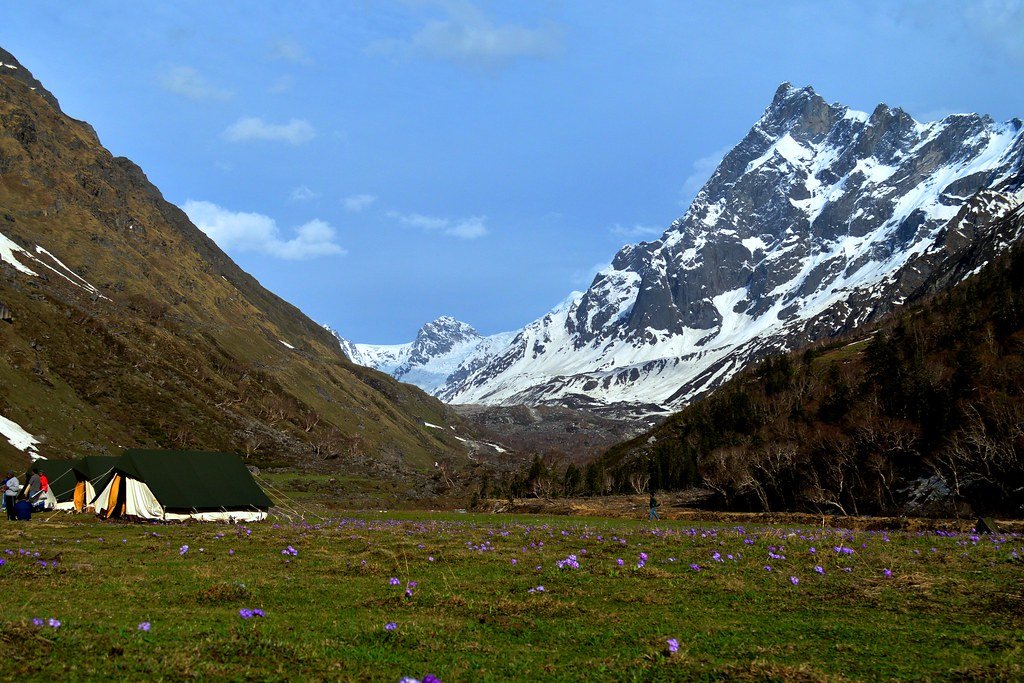Discover The Ancient Allure Of Hanumangarh | 13 Places To Visit In Hanumangarh | How To Reach
Hanumangarh, situated in the northern part of Rajasthan, India, is a historically and culturally rich city. Named after the Hindu god Hanuman, it holds significance due to its strategic location on the banks of the Ghaggar River. The city boasts a blend of historical monuments, religious sites, and natural beauty. Hanumangarh is renowned for its ancient forts, including the imposing Hanumangarh Fort, which offers panoramic views of the surrounding area. The city is also home to numerous temples and shrines dedicated to various deities, attracting pilgrims and devotees throughout the year. Apart from its historical and religious landmarks, Hanumangarh is known for its vibrant culture, traditional festivals, and bustling markets. The city’s cultural heritage is reflected in its folk music, dance, and cuisine.

Best Places To VIsit In Hanumangarh:
Must-visit places include the ancient Bhatner Fort, standing on the banks of River Ghaggar, and the Kalibanga Archaeological Site, a remnant of the Indus Valley Civilization. The city also boasts the Shri Gogaji Mandir, a temple dedicated to the folk deity Gogaji. Hanumangarh’s vibrant culture shines during festivals like Holi and Diwali. Rich in history, spirituality, and culture, Hanumangarh is a captivating destination in Rajasthan.
Here are some place to visit in Hanumagarh:
1. Bhatner Fort
Bhatner Fort, also known as Hanumangarh Fort, located in Hanumangarh, Rajasthan, is an ancient fortification with a rich history dating back to the 4th century AD. Originally built by Bhupat, a Bhatti Rajput king, it has witnessed several rulers and dynasties over the centuries. The fort’s strategic location near the Ghaggar River made it a significant military stronghold. Constructed with bricks and mud, Bhatner Fort once boasted impressive ramparts, bastions, and gates, although much of it lies in ruins today. Despite its dilapidated state, the fort remains a symbol of Hanumangarh’s historical heritage and architectural prowess.
Timing: 9:00 am to 5:00 pm
Entry fees: No

2. Kalibanga Archaeological Site
Kalibanga Archaeological Site, located in Hanumangarh, is one of the most significant Harappan Civilization sites in India. Dating back to the prehistoric Indus Valley Civilization, Kalibanga is believed to have been inhabited around 3500 BCE. The site was first discovered in 1953 and has since been extensively excavated, revealing a wealth of archaeological artifacts and structures. Kalibanga is known for its well-planned urban layout, including fortified walls, residential areas, granaries, and a sophisticated drainage system. Excavations at Kalibanga have unearthed various artifacts such as pottery, seals, jewelry, tools, and skeletal remains, providing valuable insights into ancient Harappan life, trade, and culture. The discovery of a fire altar and evidence of ritualistic practices suggests the presence of religious ceremonies and social organization.

3. Kalibanga Museum
Kalibanga Museum is an archaeological museum located in Hanumangarh district of Rajasthan. It was established in 1983 to display the excavated materials from the Harappan site of Kalibanga, which dates back to 3000-2700 BCE. The museum has three galleries, one for the Pre-Harappan finds and two for the Harappan artifacts. The museum showcases the pottery, seals, terracotta objects, figurines, bricks, and other relics of the ancient civilization that flourished along the banks of the Saraswati river. The museum also has images of the exposed structures of different levels of excavations. Kalibanga Museum is a must-visit for anyone interested in the history and culture of the Indus Valley civilization.
Timing: 9:00 am to 5:00 pm
Entry Fee: No

4. Shri Gogaji Temple
Shri Gogaji Temple is a historical temple dedicated to Gogaji, a folk deity of Rajasthan. It is located in Gogamedi village of Hanumangarh district. The temple is believed to be around 950 years old and has a unique tradition of offering onions and pulses as prasad. The temple attracts devotees from different religions and regions, especially during the annual fair that lasts for 15 days from Rakshabandhan. The temple is also a symbol of communal harmony and valor. You can visit the temple from 9 am to 10 pm, except on Fridays. There is no entry fee for the temple.

5. Brahmani Mata Temple
Brahmani Mata Temple is a historical temple dedicated to Brahmani Mata, a form of Goddess Durga. It is located in Pallu village of Hanumangarh. The temple is situated on the remains of the ancient Kalloor Fort, which was built by the Bhati Rajputs. The temple is famous for its annual fair, called Mata Brahmani Mela, which attracts devotees from different regions and religions. The temple also offers onions and pulses as prasad to the visitors. The temple is open daily from 9 am to 10 pm, except on Fridays.
6. Sila Mata Temple
The Sila Mata Temple is a revered Hindu shrine dedicated to Goddess Sila Mata, embodying divine feminine energy. Built amidst serene surroundings, the temple holds religious significance for devotees who seek blessings and offer prayers. Its traditional Rajasthani architecture features intricately carved pillars and vibrant paintings. Devotees revere a sacred stone believed to embody the goddess’s presence. Special prayers and rituals are conducted during festivals, drawing large gatherings. The temple offers a tranquil ambiance for devotees to connect with the divine and experience spiritual fulfillment.
7. Pallu Fort
Pallu Fort is a historical fort located in Pallu village of Rawatsar tehsil in Hanumangarh. The fort was built by the Bhati Rajputs, who ruled over this region for centuries. The fort is situated on the remains of the ancient Kalloor Fort, which was also built by the Bhati Rajputs. The fort has a square shape with four bastions at the corners and a massive gate on the east side. The fort also has a temple of Brahmani Mata, a form of Goddess Durga, inside its premises. The temple is famous for its annual fair, which attracts devotees from different regions and religions. Pallu Fort is a testimony of the rich cultural and historical heritage of this area.
Timing: 9 am to 10pm
Entry Fee: No
8. Jalapa Devi Temple
Jalapa Devi Temple is a Hindu temple dedicated to Jalapa Devi, a form of the goddess Durga.. The temple is situated on the banks of the Navlika river, about 34 km from Pauri on the main Pauri-Kotdwar road. The temple is believed to be very ancient and has a rich history and culture. The temple celebrates two Navratri festivals every year, in the months of Chaitra and Ashwin, when devotees flock to the temple to seek the blessings of the goddess. The temple is also associated with Guru Rinpoche, a Buddhist master who is said to have placed the twenty-one genyen spirits of the gods under oath at this site. The temple has a mix of Hindu and Buddhist architecture and houses a statue of Guru Rinpoche on horseback with a snake around his neck. The temple is a place of meditation and spiritual power for both Hindus and Buddhists.

9. Gurudwara Shri Kabutar Sahib
Gurudwara Shri Kabutar Sahib is a Sikh shrine located in Nohar, a town in Hanumangarh. It is associated with the visit of Guru Gobind Singh, the tenth Sikh Guru, who came here in 1706 while travelling to Nanded (Hazoor Sahib). According to a legend, the Guru revived a dead pigeon with his spiritual power after it was accidentally killed by one of his Sikhs. The shrine was built in 1908 and later renovated by Baba Pritam Singh Sevawale of Sirsa. It is a place of worship and meditation for the Sikh devotees.

10. Gurdwara of Shri Sukha Singh Mehtab Singh
Gurdwara of Shri Sukha Singh Mehtab Singh is a Sikh shrine. It commemorates the heroic deed of two Sikh warriors, Bhai Sukha Singh and Bhai Mehtab Singh, who avenged the desecration of the Golden Temple by beheading Massa Rangar, a Mughal official, in 1740. The Gurdwara was built in the 18th century and has a historic tree under which the two Sikhs rested after their mission. It is a place of reverence and respect for the Sikh community.

11. Bhadrakali Mandir
Bhadrakali Mandir is a Hindu temple dedicated to Goddess Bhadrakali, one of the forms of Goddess Durga. It is located on the banks of the Ghaggar River in Hanumangarh. The temple was built by Maharaja Ram Singh of Bikaner in the 19th century, who was a devotee of Bhadrakali. The temple has a red stone idol of the goddess and a dome-shaped shikhar. The temple is visited by many pilgrims, especially during the Navratri festivals in March and October.

12. Ramdev Pir Temple
The Ramdev Pir Temple is a revered Hindu pilgrimage site dedicated to the folk deity Ramdev Pir. This temple holds immense religious significance for devotees who believe in the miraculous powers of Ramdev Pir, known for his compassion and blessings. The temple complex features traditional Rajasthani architecture, with intricate carvings and vibrant decorations adorning its premises. Pilgrims from across the country visit this sacred site to pay homage to Ramdev Pir, seeking his blessings for prosperity, health, and protection. The temple also hosts various religious events and festivals, attracting devotees who gather to celebrate and seek spiritual solace. With its serene ambiance and spiritual aura, the Ramdev Pir Temple is a cherished destination for devotees and visitors seeking divine blessings and peace of mind.

13. Shri Khatu Shyam Ji Mandir
Shri Khatu Shyam Ji Mandir is a Hindu temple dedicated to Khatu Shyam Ji, who is believed to be the incarnation of Barbarika, the son of Ghatotkacha and grandson of Bhima. It is said that Khatu Shyam Ji sacrificed his head to Lord Krishna before the Mahabharata war and was granted a boon to be worshipped in the Kaliyuga. The temple was built by Roopsingh Chauhan, the king of Khatu, in 1027 AD, and later renovated by Diwan Abhaisingh in 1720 AD. The temple is made of white marble and has a dome-shaped shikhar. The temple also has a holy pond called Shyam Kund, where devotees take a dip to seek blessings. The temple is a popular pilgrimage site for Hindus and attracts many visitors during the annual fair.

These were some places to visit in Hanumangarh. Hope you liked it. Have a safe journey!
How To Reach Hanumangarh from Delhi
- By Train: There are no direct trains from Delhi to Hanumangarh. However, you can take a train from Delhi to nearby railway stations like Bikaner Junction or Sri Ganganagar Junction, and then proceed to Hanumangarh by road.
Here are some trains from Delhi to Hanumangarh along with their names, numbers, charges and duration in a table format:
| Train Name | Train Number | Fare (INR) | Duration |
|---|---|---|---|
| Avadh Assam Express | 15909 | 140 (SL) | 7h 40m |
| Tilak Bridge – Shri Ganganagar Express | 14728 | 140 (SL) | 9h 45m |
| Hazur Sahib Nanded – Shri Ganganagar SF Express | 12439 | 495 (3A), 700 (2A) | 8h 15m |
- By Bus: Several state-run and private buses operate between Delhi and Hanumangarh. You can board a bus from various bus terminals in Delhi to Hanumangarh. The journey takes approximately 8-10 hours depending on the route and traffic conditions.
- By Car: You can also travel to Hanumangarh by car. The distance between Delhi and Hanumangarh is around 400-450 kilometers, and the journey takes approximately 7-9 hours depending on the route and traffic conditions. You can take NH9 or NH11 from Delhi to reach Hanumangarh.
- By Air: The nearest airport to Hanumangarh is in Bathinda, Punjab, which is approximately 150 kilometers away. From Bathinda, you can hire a taxi or take a bus to reach Hanumangarh.
Best Time To Visit Hanumangarh
The best time to visit Hanumangarh is during the winter months, from October to March, due to pleasant weather conditions and various cultural festivals. It’s advisable to avoid summers due to extreme heat and monsoons due to heavy rainfall.
Nesrest Places To Hanumangarh:
| City | Distance (km) | Population |
|---|---|---|
| Ganganagar | 56 | 2,29,702 |
| Bathinda | 94 | 2,88,060 |
| Hisar | 143 | 3,00,852 |
| Okara | 160 | 3,03,599 |
| Sahiwal | 168 | 2,51,456 |
The distances are measured from the center of Hanumangarh to the center of each city. The populations are based on the 2011 census of India and the 2017 census of Pakistan
I hope this table is helpful for you. 😊



